Genetic Testing for Wilson Disease Melissa Dempsey, M.S.,
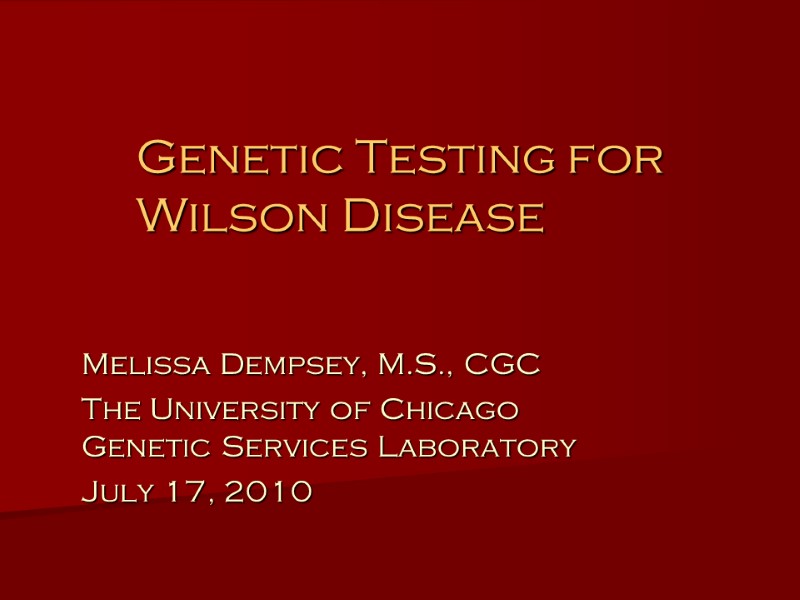
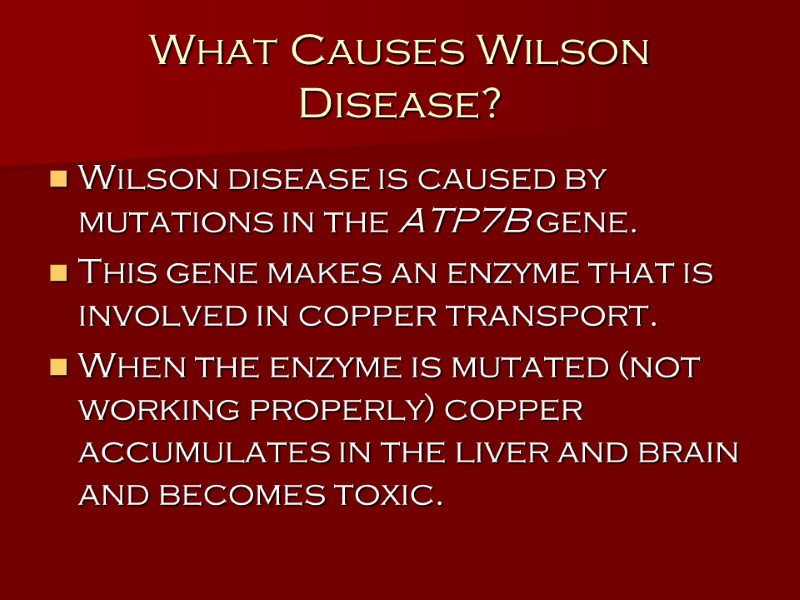
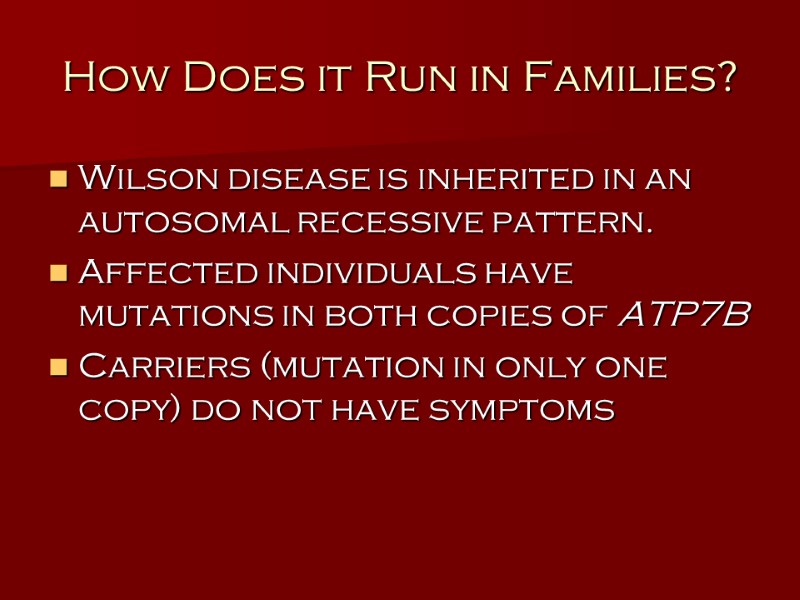
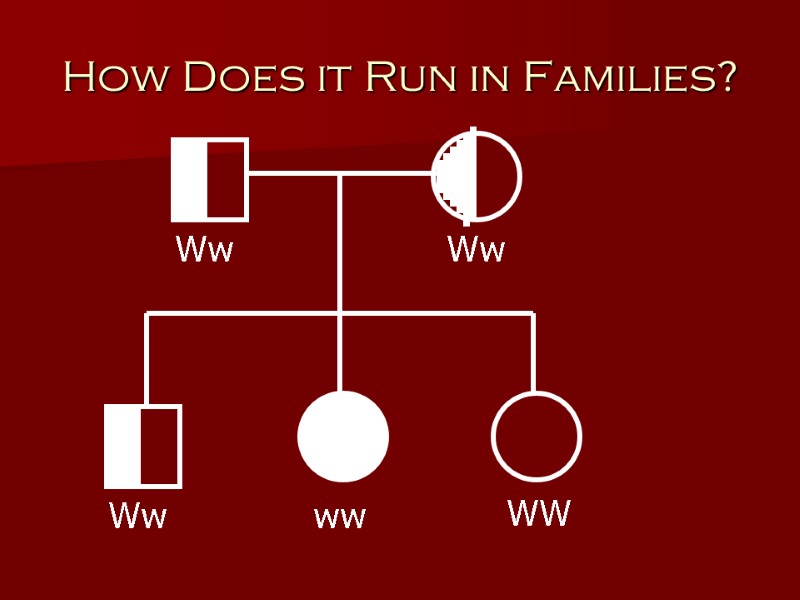
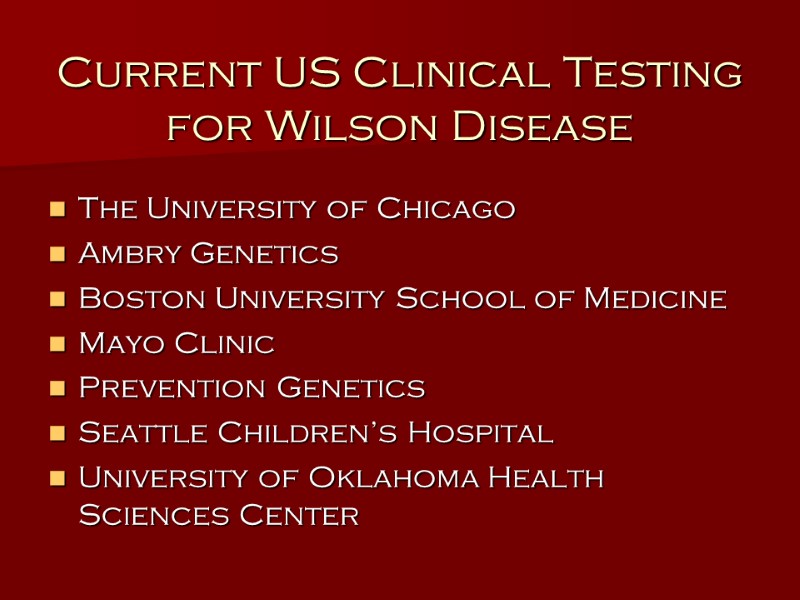
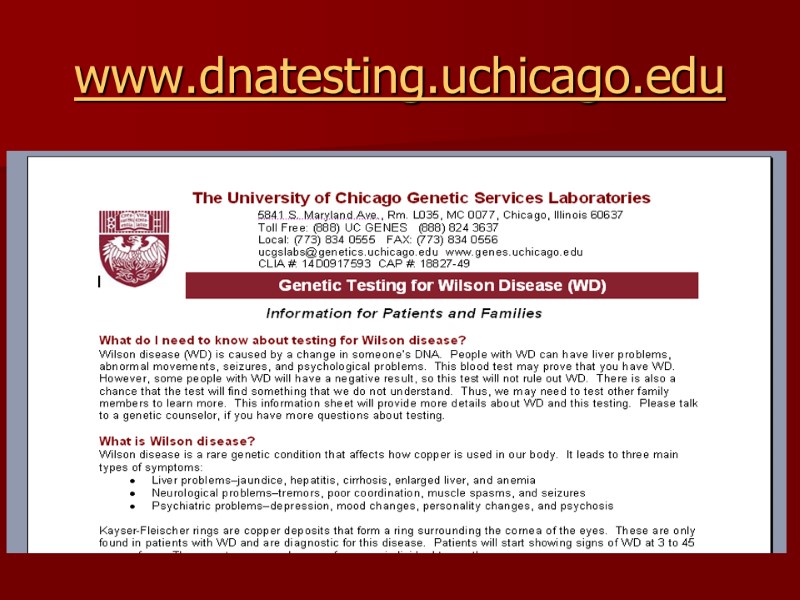
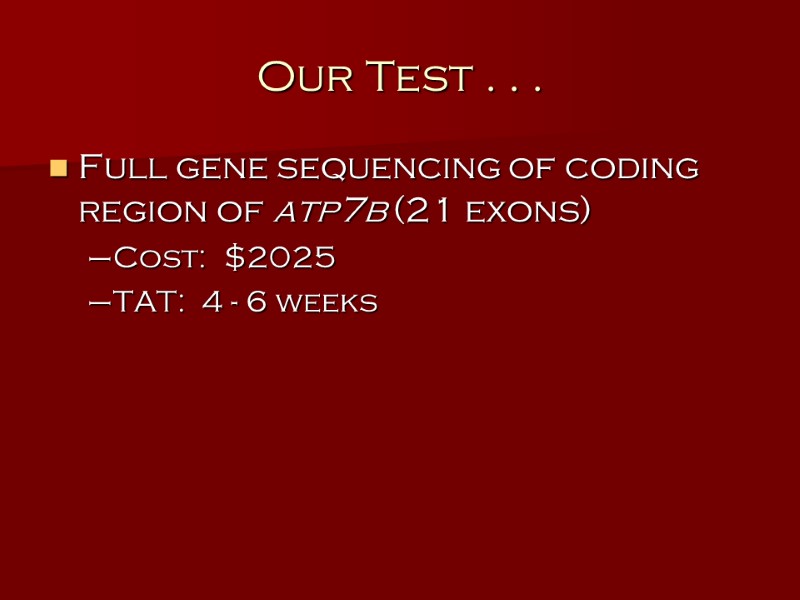
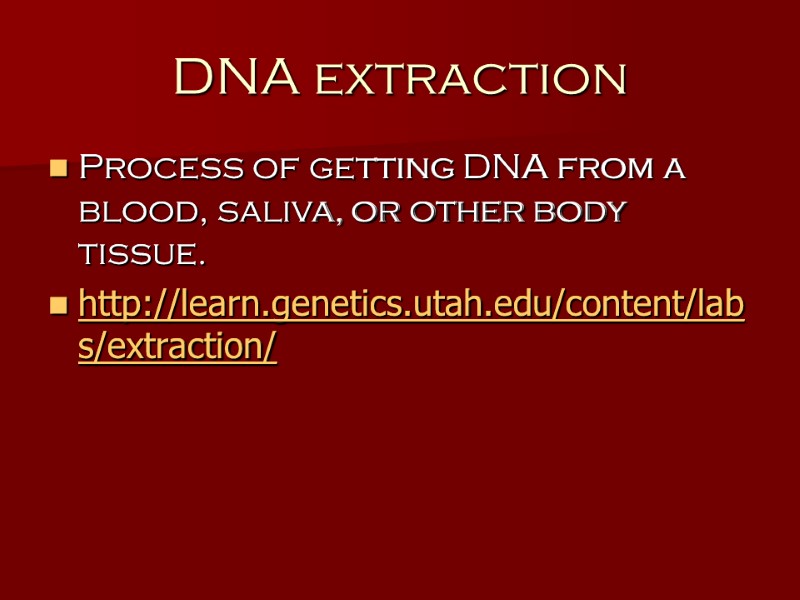
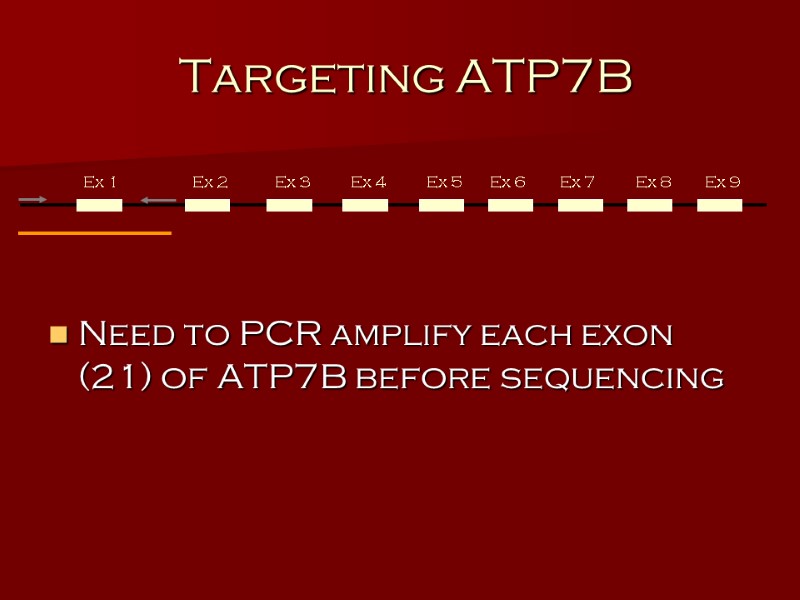
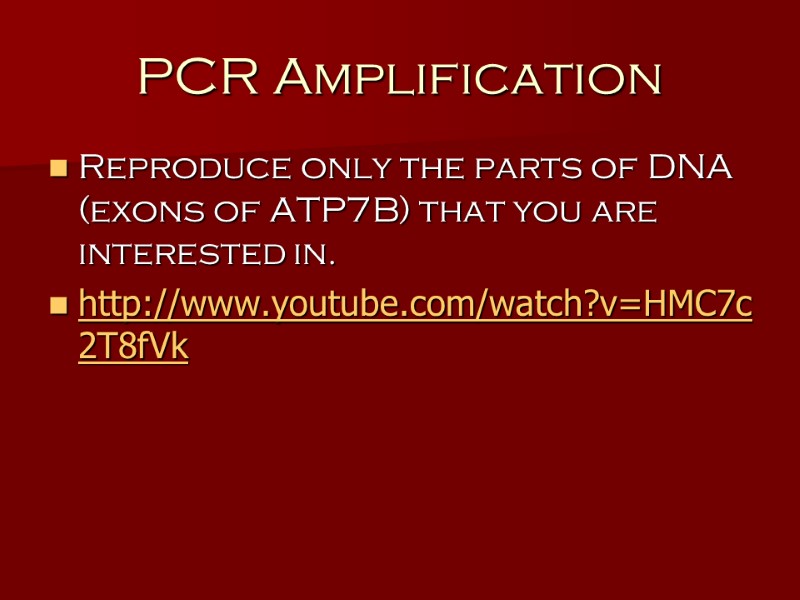
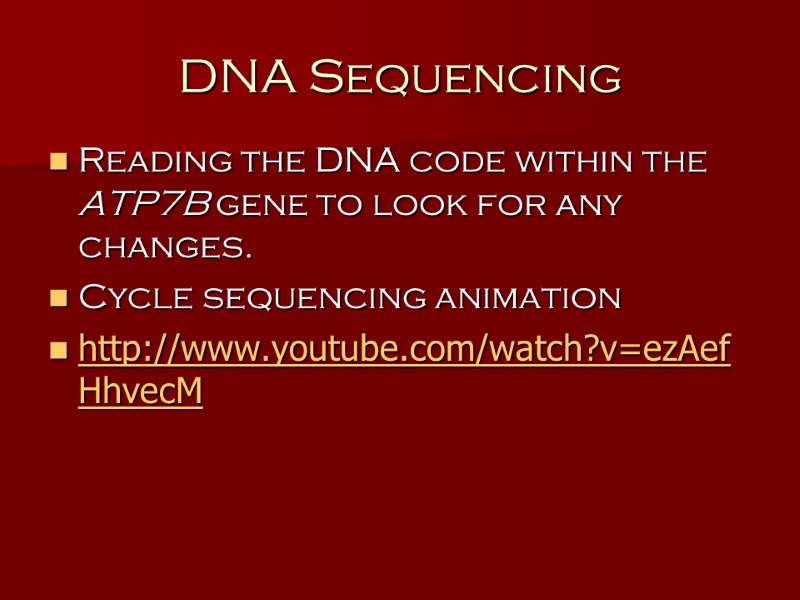
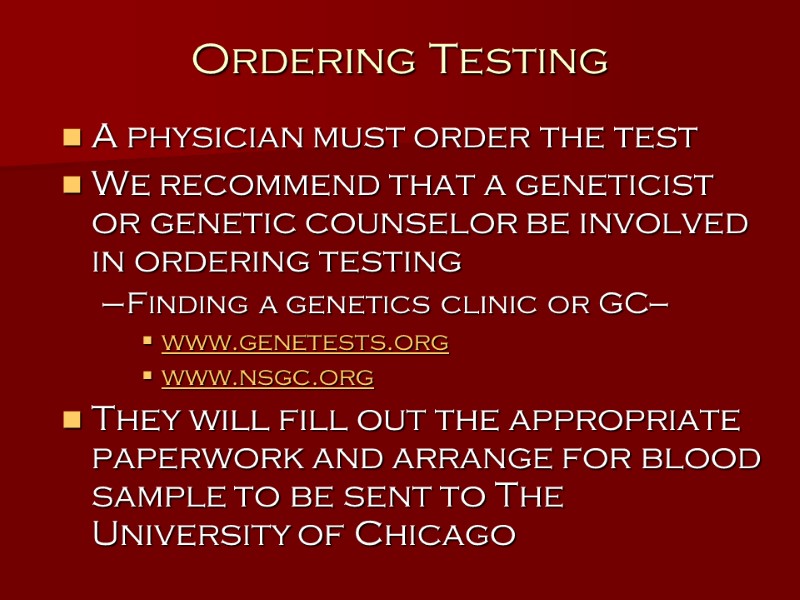
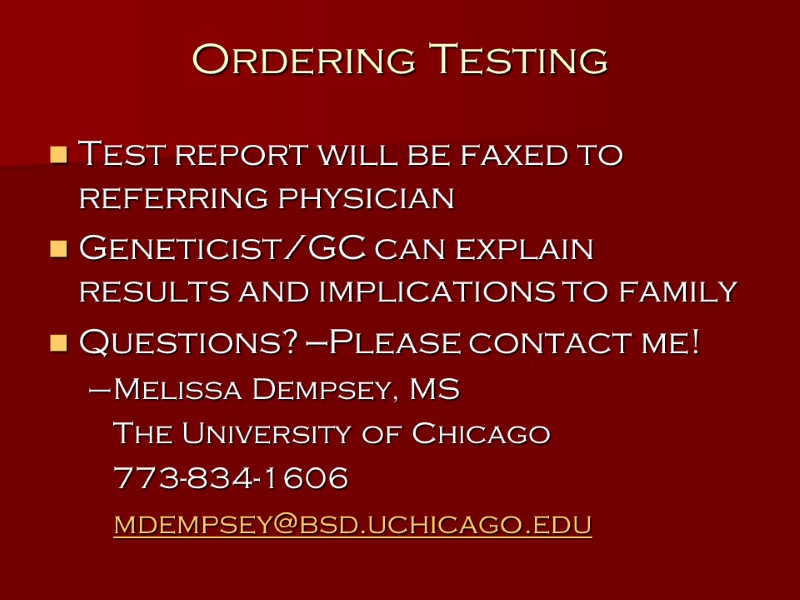
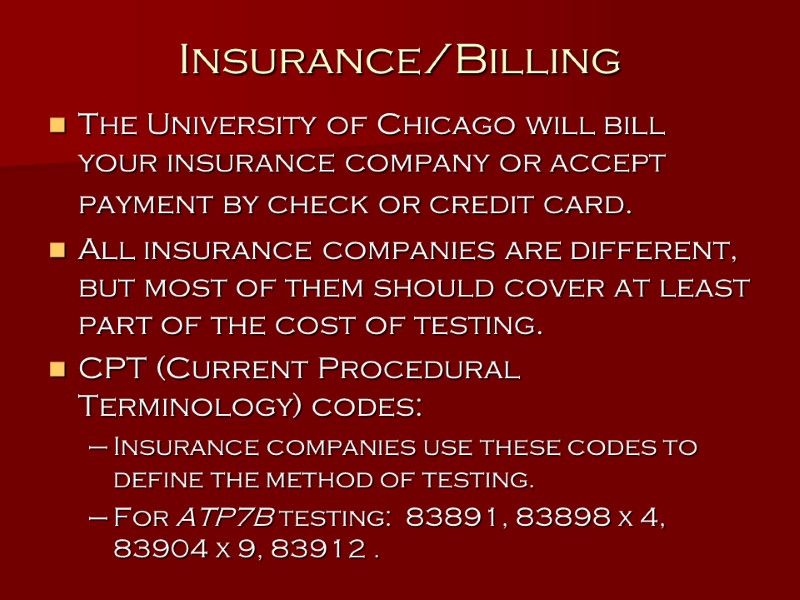
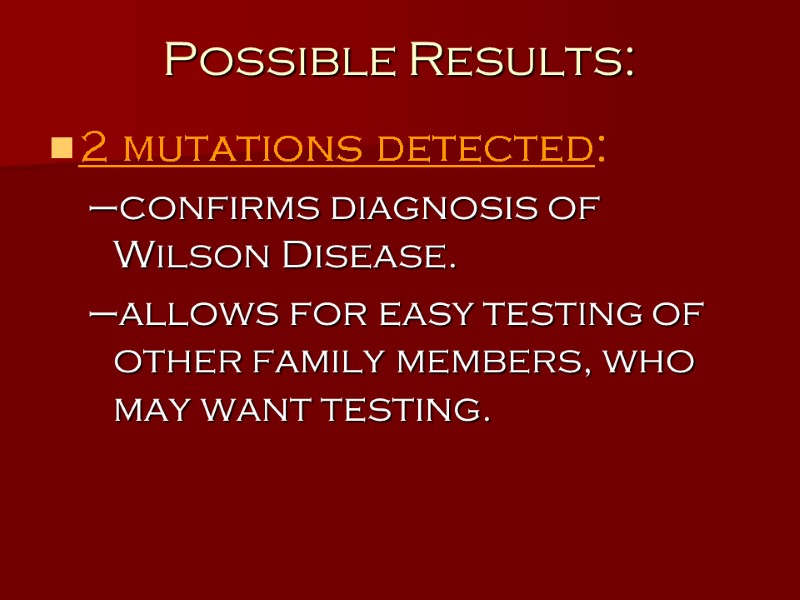
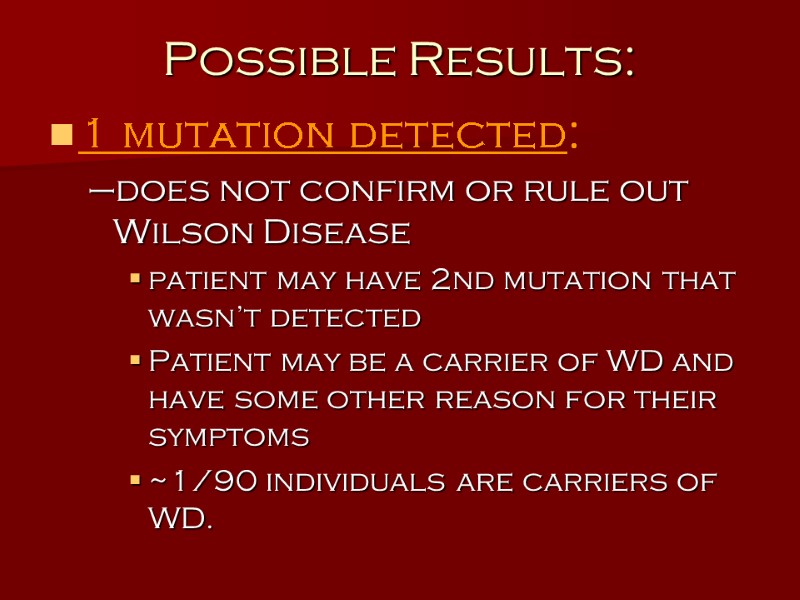
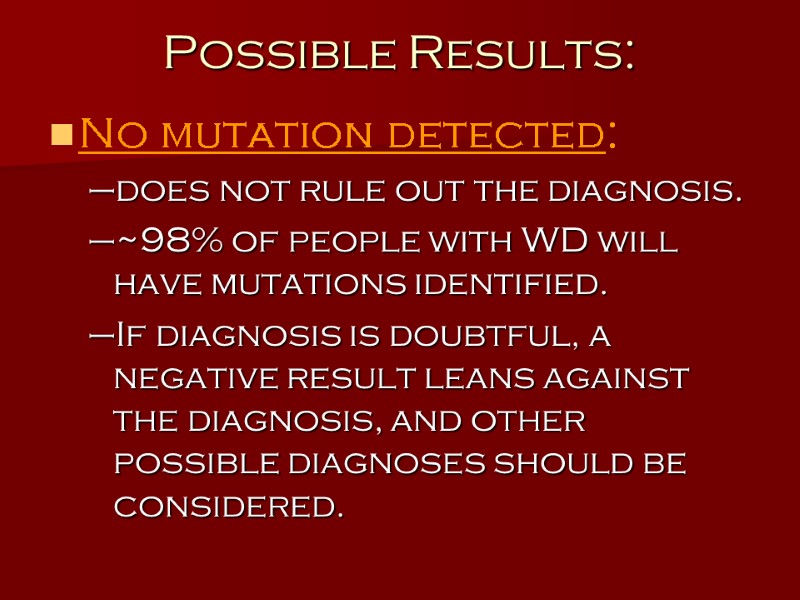
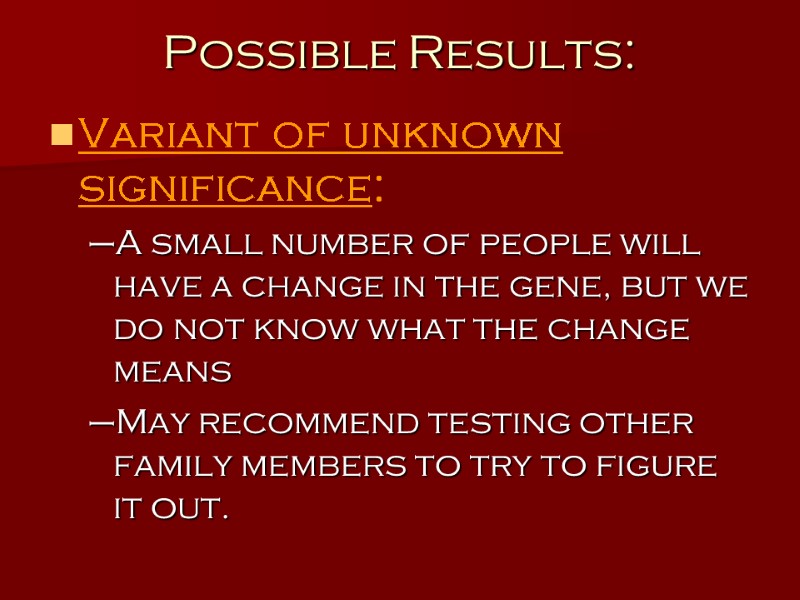
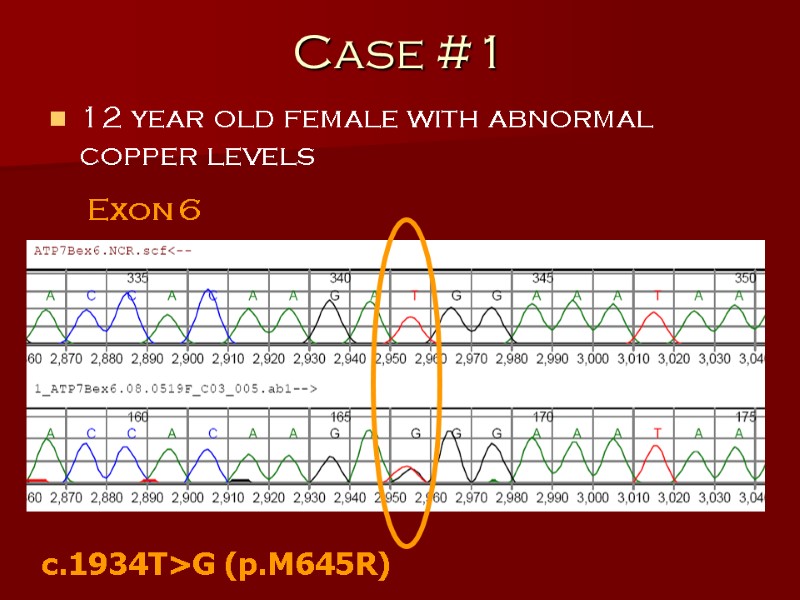
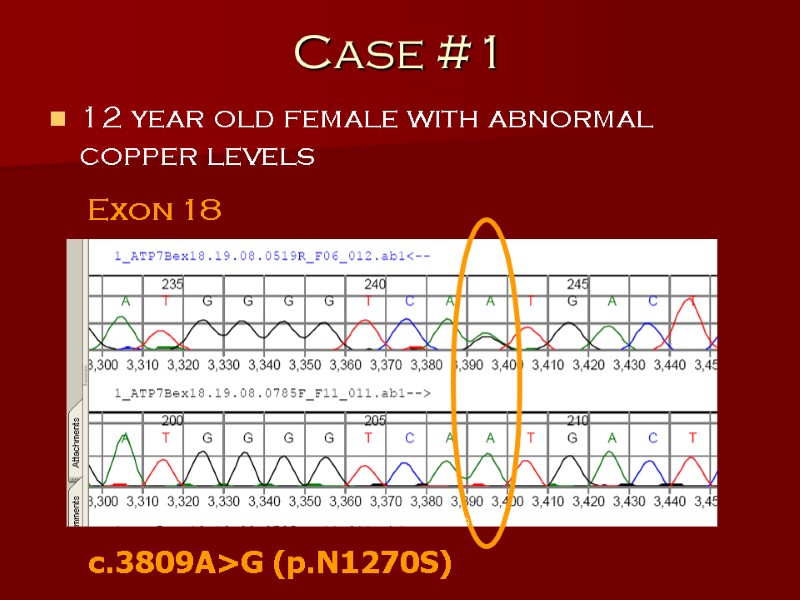
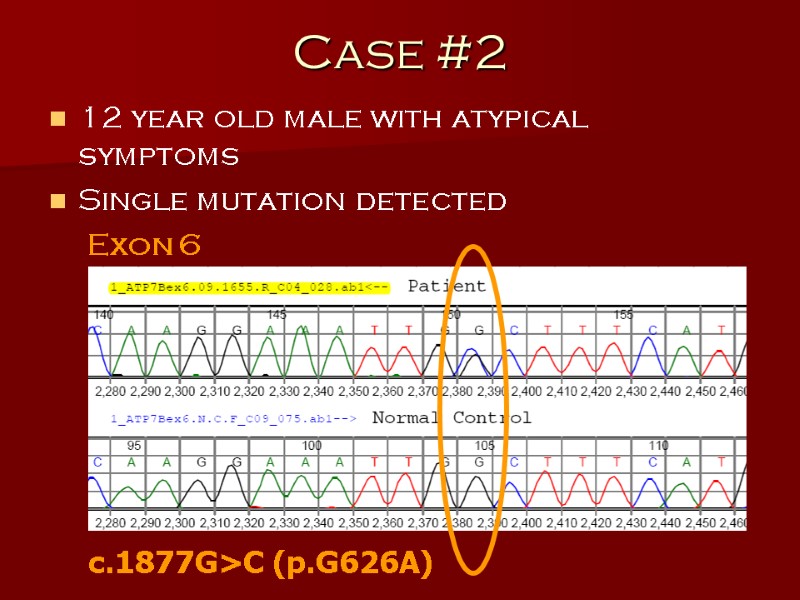
12908-wilson-disease-testing.ppt
- Количество слайдов: 21
 Genetic Testing for Wilson Disease Melissa Dempsey, M.S., CGC The University of Chicago Genetic Services Laboratory July 17, 2010
Genetic Testing for Wilson Disease Melissa Dempsey, M.S., CGC The University of Chicago Genetic Services Laboratory July 17, 2010
 What Causes Wilson Disease? Wilson disease is caused by mutations in the ATP7B gene. This gene makes an enzyme that is involved in copper transport. When the enzyme is mutated (not working properly) copper accumulates in the liver and brain and becomes toxic.
What Causes Wilson Disease? Wilson disease is caused by mutations in the ATP7B gene. This gene makes an enzyme that is involved in copper transport. When the enzyme is mutated (not working properly) copper accumulates in the liver and brain and becomes toxic.
 How Does it Run in Families? Wilson disease is inherited in an autosomal recessive pattern. Affected individuals have mutations in both copies of ATP7B Carriers (mutation in only one copy) do not have symptoms
How Does it Run in Families? Wilson disease is inherited in an autosomal recessive pattern. Affected individuals have mutations in both copies of ATP7B Carriers (mutation in only one copy) do not have symptoms
 How Does it Run in Families? Ww Ww ww Ww WW
How Does it Run in Families? Ww Ww ww Ww WW
 Current US Clinical Testing for Wilson Disease The University of Chicago Ambry Genetics Boston University School of Medicine Mayo Clinic Prevention Genetics Seattle Children’s Hospital University of Oklahoma Health Sciences Center
Current US Clinical Testing for Wilson Disease The University of Chicago Ambry Genetics Boston University School of Medicine Mayo Clinic Prevention Genetics Seattle Children’s Hospital University of Oklahoma Health Sciences Center
 www.dnatesting.uchicago.edu
www.dnatesting.uchicago.edu
 Our Test . . . Full gene sequencing of coding region of atp7b (21 exons) Cost: $2025 TAT: 4 - 6 weeks
Our Test . . . Full gene sequencing of coding region of atp7b (21 exons) Cost: $2025 TAT: 4 - 6 weeks
 DNA extraction Process of getting DNA from a blood, saliva, or other body tissue. http://learn.genetics.utah.edu/content/labs/extraction/ Process of getting DNA from a blood, saliva, or other body tissue. http://learn.genetics.utah.edu/content/labs/extraction/
DNA extraction Process of getting DNA from a blood, saliva, or other body tissue. http://learn.genetics.utah.edu/content/labs/extraction/ Process of getting DNA from a blood, saliva, or other body tissue. http://learn.genetics.utah.edu/content/labs/extraction/
 Targeting ATP7B Need to PCR amplify each exon (21) of ATP7B before sequencing Ex 1 Ex 2 Ex 3 Ex 4 Ex 5 Ex 6 Ex 7 Ex 8 Ex 9
Targeting ATP7B Need to PCR amplify each exon (21) of ATP7B before sequencing Ex 1 Ex 2 Ex 3 Ex 4 Ex 5 Ex 6 Ex 7 Ex 8 Ex 9
 PCR Amplification Reproduce only the parts of DNA (exons of ATP7B) that you are interested in. http://www.youtube.com/watch?v=HMC7c2T8fVk
PCR Amplification Reproduce only the parts of DNA (exons of ATP7B) that you are interested in. http://www.youtube.com/watch?v=HMC7c2T8fVk
 DNA Sequencing Reading the DNA code within the ATP7B gene to look for any changes. Cycle sequencing animation http://www.youtube.com/watch?v=ezAefHhvecM
DNA Sequencing Reading the DNA code within the ATP7B gene to look for any changes. Cycle sequencing animation http://www.youtube.com/watch?v=ezAefHhvecM
 Ordering Testing A physician must order the test We recommend that a geneticist or genetic counselor be involved in ordering testing Finding a genetics clinic or GC— www.genetests.org www.nsgc.org They will fill out the appropriate paperwork and arrange for blood sample to be sent to The University of Chicago
Ordering Testing A physician must order the test We recommend that a geneticist or genetic counselor be involved in ordering testing Finding a genetics clinic or GC— www.genetests.org www.nsgc.org They will fill out the appropriate paperwork and arrange for blood sample to be sent to The University of Chicago
 Ordering Testing Test report will be faxed to referring physician Geneticist/GC can explain results and implications to family Questions? —Please contact me! Melissa Dempsey, MS The University of Chicago 773-834-1606 [email protected]
Ordering Testing Test report will be faxed to referring physician Geneticist/GC can explain results and implications to family Questions? —Please contact me! Melissa Dempsey, MS The University of Chicago 773-834-1606 [email protected]
 Insurance/Billing The University of Chicago will bill your insurance company or accept payment by check or credit card. All insurance companies are different, but most of them should cover at least part of the cost of testing. CPT (Current Procedural Terminology) codes: Insurance companies use these codes to define the method of testing. For ATP7B testing: 83891, 83898 x 4, 83904 x 9, 83912 .
Insurance/Billing The University of Chicago will bill your insurance company or accept payment by check or credit card. All insurance companies are different, but most of them should cover at least part of the cost of testing. CPT (Current Procedural Terminology) codes: Insurance companies use these codes to define the method of testing. For ATP7B testing: 83891, 83898 x 4, 83904 x 9, 83912 .
 Possible Results: 2 mutations detected: confirms diagnosis of Wilson Disease. allows for easy testing of other family members, who may want testing.
Possible Results: 2 mutations detected: confirms diagnosis of Wilson Disease. allows for easy testing of other family members, who may want testing.
 Possible Results: 1 mutation detected: does not confirm or rule out Wilson Disease patient may have 2nd mutation that wasn’t detected Patient may be a carrier of WD and have some other reason for their symptoms ~1/90 individuals are carriers of WD.
Possible Results: 1 mutation detected: does not confirm or rule out Wilson Disease patient may have 2nd mutation that wasn’t detected Patient may be a carrier of WD and have some other reason for their symptoms ~1/90 individuals are carriers of WD.
 Possible Results: No mutation detected: does not rule out the diagnosis. ~98% of people with WD will have mutations identified. If diagnosis is doubtful, a negative result leans against the diagnosis, and other possible diagnoses should be considered.
Possible Results: No mutation detected: does not rule out the diagnosis. ~98% of people with WD will have mutations identified. If diagnosis is doubtful, a negative result leans against the diagnosis, and other possible diagnoses should be considered.
 Possible Results: Variant of unknown significance: A small number of people will have a change in the gene, but we do not know what the change means May recommend testing other family members to try to figure it out.
Possible Results: Variant of unknown significance: A small number of people will have a change in the gene, but we do not know what the change means May recommend testing other family members to try to figure it out.
 Case #1 12 year old female with abnormal copper levels Exon 6 c.1934T>G (p.M645R)
Case #1 12 year old female with abnormal copper levels Exon 6 c.1934T>G (p.M645R)
 Case #1 12 year old female with abnormal copper levels Exon 18 c.3809A>G (p.N1270S)
Case #1 12 year old female with abnormal copper levels Exon 18 c.3809A>G (p.N1270S)
 Case #2 12 year old male with atypical symptoms Single mutation detected Exon 6 c.1877G>C (p.G626A)
Case #2 12 year old male with atypical symptoms Single mutation detected Exon 6 c.1877G>C (p.G626A)
